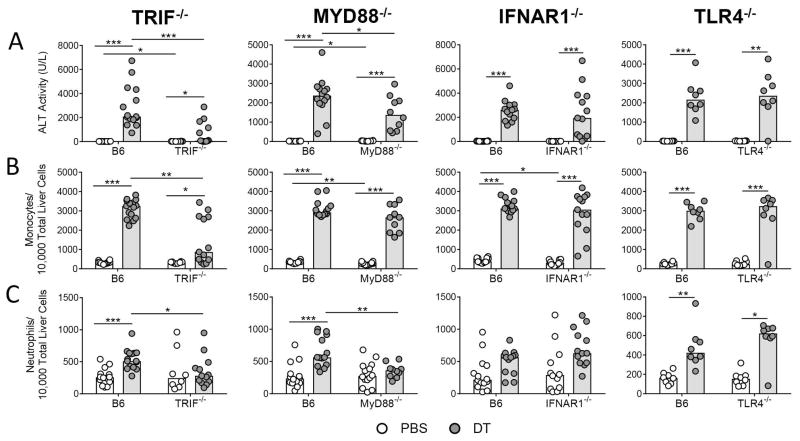Figure 4. TRIF−/− mice exhibit less inflammation than MyD88−/−, IFNAR1−/−, and TLR4−/− mice following hepatocyte death.
(A) Serum ALT levels, (B) monocyte, and (C) neutrophil numbers in rAAV-transduced C57BL/6J, TRIF−/−, MyD88−/−, IFNAR1−/−, and TLR4−/− mice 48 hours following injection of 1X PBS or DT. Data are combined for 3 independent TRIF−/− experiments, 3 independent MyD88−/− experiments, 3 independent IFNAR1−/− experiments, and 2 independent TLR4−/−experiments. The B6 mice used in the third repetition of the IFNAR1−/− experiments were also used for the third repetition of the MyD88−/− experiments, so the data appears twice (n = 4, B6 + PBS and B6 + DT groups). Each data point represents an individual mouse (n = 8–15 per group), bars represent the median. Significance determined by four pairwise Mann-Whitney tests and the p-values adjusted for multiple comparisons using the Holm-Bonferroni method as described in the methods. *, P ≤ 0.05; **, P ≤ 0.01; ***, P ≤ 0.001; non-significance represented by absence of bar. DT, diphtheria toxin; TRIF, TIR-domain-containing adapter-inducing interferon-β; MyD88, myeloid differentiation primary-response protein 88, IFNAR, IFN (α and β) receptor 1; and TLR4, Toll-like receptor 4.

